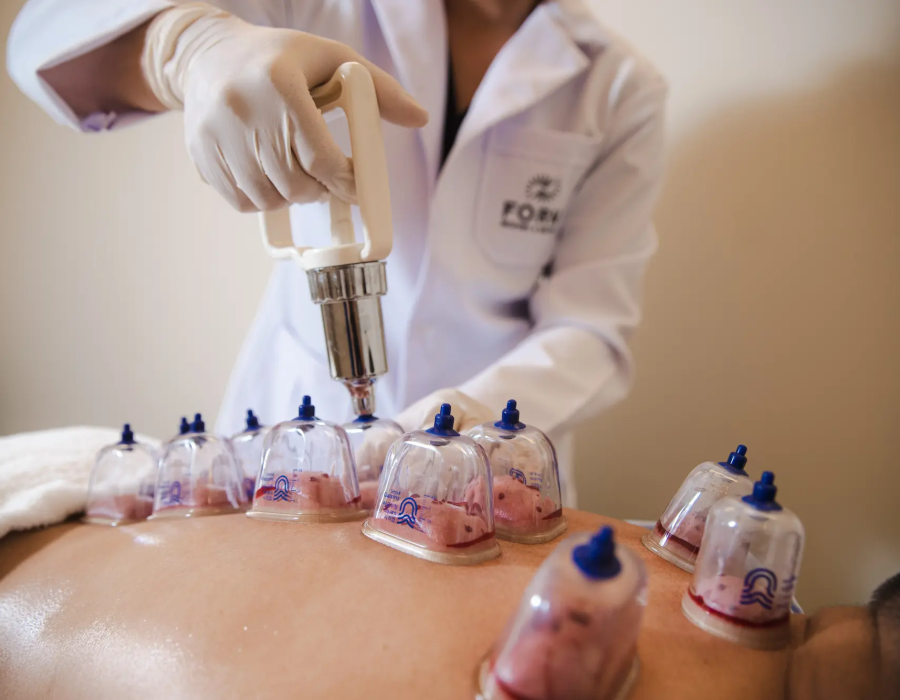Hijama, or cupping therapy, is an ancient practice with roots deeply embedded in traditional medicine systems. Originating from various cultures including Chinese, Middle Eastern, and Greek medicine, Hijama involves creating a vacuum in cups placed on the skin to promote healing and relieve pain. In Dubai, Hijama has gained popularity as a complementary therapy for its purported benefits, which range from enhancing overall wellness to alleviating specific health conditions.
Understanding Hijama: How It Works:
Hijama Treatment in Dubai involves placing specialized cups on the skin and creating suction. This suction draws the skin and underlying tissues into the cup, which can be done through heat or mechanical pumps. The vacuum created increases blood flow to the area, which is believed to help in the healing process. There are different types of cupping techniques, including:
- Dry Cupping: This involves creating a vacuum inside the cups without making any incisions on the skin. This method is used primarily for improving circulation and alleviating muscle tension.
- Wet Cupping (Hijama): This technique includes making small incisions on the skin before applying the cups. The suction draws out a small amount of blood, which is thought to help detoxify the body and improve circulation.
- Fire Cupping: Uses fire to create the vacuum inside the cups. The heat causes the air inside the cup to expand, creating suction when the cup is placed on the skin.
Therapeutic Benefits of Hijama:
Hijama is believed to offer a range of therapeutic benefits. Here are some of the key advantages reported by practitioners and users:
- Pain Relief: One of the most common reasons people seek Hijama is for pain management. Cupping therapy is often used to relieve chronic back pain, neck pain, and headaches. The suction and increased blood flow can help relax tight muscles and improve circulation, which may contribute to reduced pain and discomfort.
- Improved Circulation: By increasing blood flow to the treated areas, Hijama can help enhance circulation. Improved circulation can aid in the delivery of oxygen and nutrients to tissues, promoting faster healing and better overall health.
- Detoxification: Wet cupping, in particular, is believed to help in detoxifying the body. By drawing out a small amount of blood, it is thought that Hijama can help remove toxins and waste products from the bloodstream.
- Stress Reduction: Many people find that Hijama helps in reducing stress and promoting relaxation. The therapy can stimulate the parasympathetic nervous system, which can help reduce the effects of stress and promote a sense of well-being.
- Enhanced Immune Function: Some studies suggest that cupping therapy may help boost the immune system by increasing the production of white blood cells and improving the body’s natural defense mechanisms.
- Skin Health: Hijama can improve the appearance and health of the skin. The increased blood flow and suction may promote better skin texture, reduce the appearance of scars, and help with conditions such as acne.
Hijama in Dubai: Where to Find Quality Treatment:
In Dubai, Hijama has become increasingly popular, and many clinics offer this therapy as part of their services. Here are some considerations for finding a reputable Hijama provider:
- Accreditation and Certification: Ensure that the clinic or therapist is properly accredited and certified. Look for practitioners who are trained in Hijama and have experience in providing safe and effective treatment.
- Cleanliness and Safety: Hygiene is crucial when it comes to Hijama. Choose a clinic that maintains high standards of cleanliness and uses sterilized equipment to minimize the risk of infection.
- Reviews and Recommendations: Research and read reviews from other clients to gauge the quality of service provided. Recommendations from friends or family can also be valuable in finding a trusted Hijama practitioner.
- Consultation: Before undergoing Hijama, schedule a consultation with the therapist to discuss your health concerns and determine if the therapy is suitable for you. This is also an opportunity to ask about the techniques used and the expected outcomes.
Potential Risks and Precautions:
While Hijama is generally considered safe, it is important to be aware of potential risks and take necessary precautions:
- Infection Risk: As with any procedure involving skin punctures, there is a risk of infection. Ensure that the practitioner follows strict hygiene practices and uses sterile equipment.
- Skin Sensitivity: Some individuals may experience skin sensitivity or bruising after the treatment. It is essential to discuss any pre-existing skin conditions or concerns with the therapist.
- Medical Conditions: Individuals with certain medical conditions, such as bleeding disorders or skin infections, should consult with a healthcare professional before undergoing Hijama. Pregnant women should also seek medical advice before starting cupping therapy.
Integrating Hijama into a Holistic Wellness Routine:
Hijama can be a valuable addition to a holistic wellness routine. Combining this therapy with other health practices, such as regular exercise, a balanced diet, and stress management techniques, can enhance overall well-being. Many people use Hijama alongside other complementary therapies like acupuncture or massage to achieve optimal results.
Conclusion:
Hijama, or cupping therapy, offers a range of potential benefits for those seeking alternative and complementary health treatments. In Dubai, the growing popularity of Hijama reflects its increasing acceptance and recognition as a valuable therapeutic practice. By understanding how Hijama works, exploring its benefits, and finding a reputable provider, individuals can make informed decisions about incorporating this ancient practice into their wellness routines. As with any therapeutic intervention, it is crucial to approach Hijama with knowledge and care to ensure a safe and effective experience.





Comments